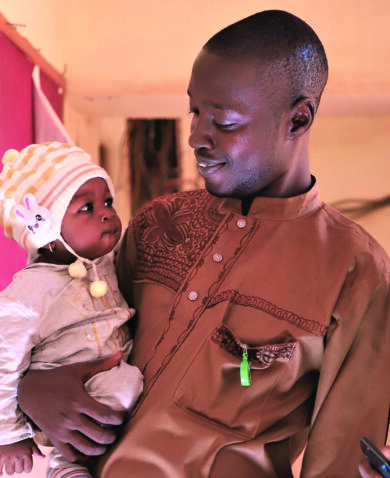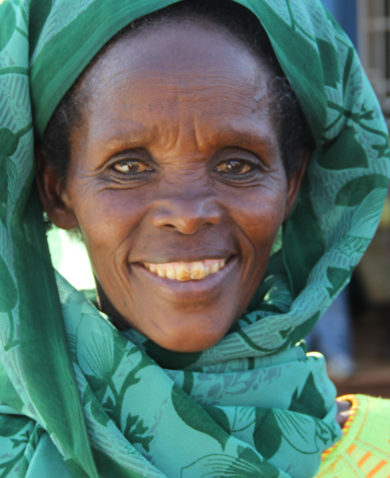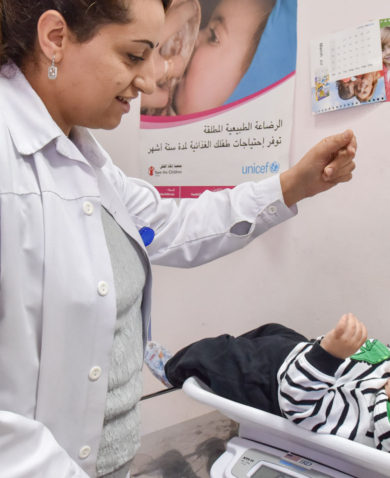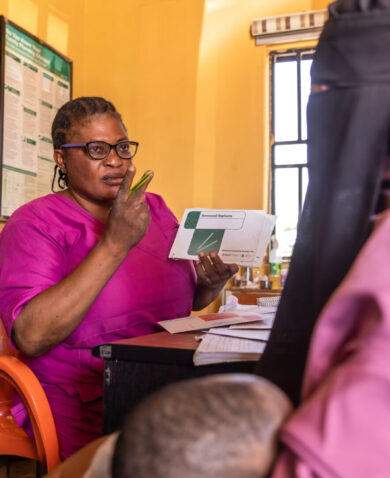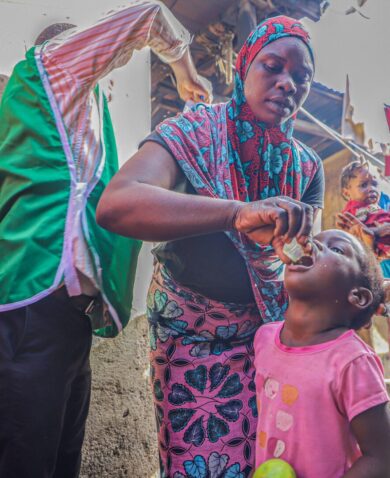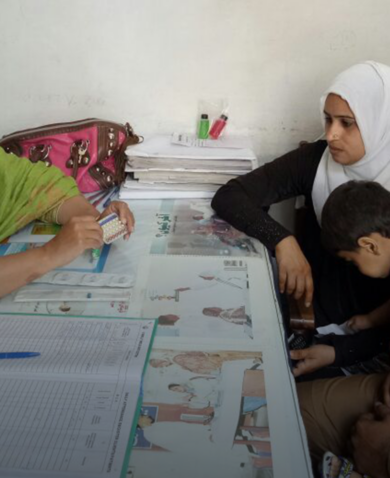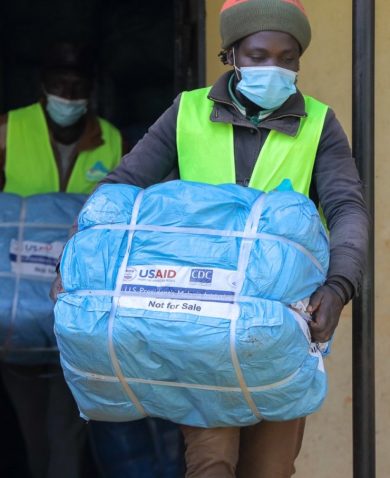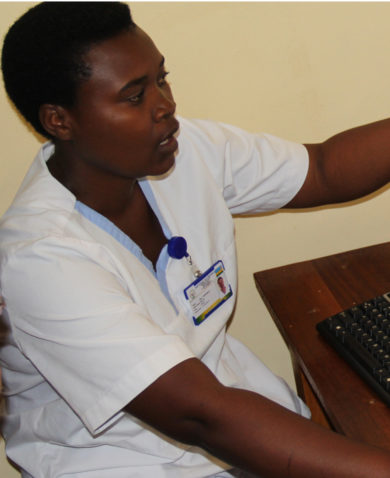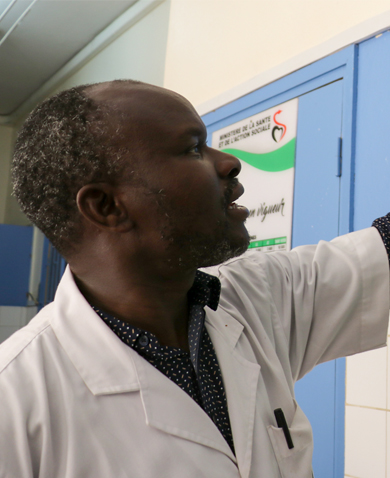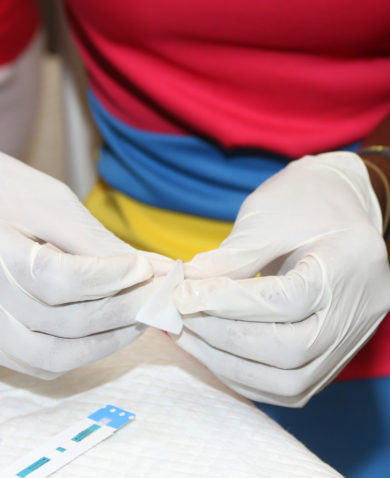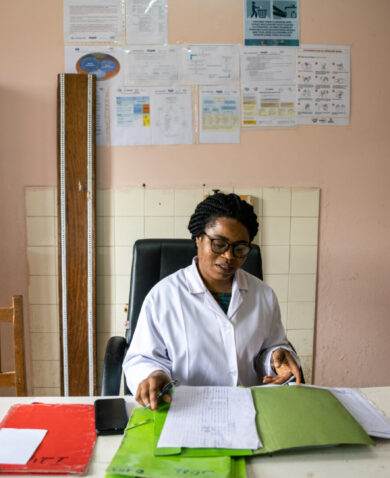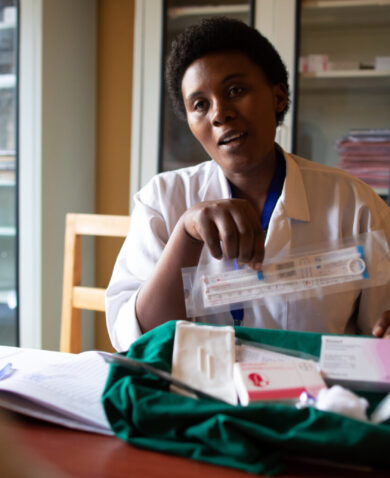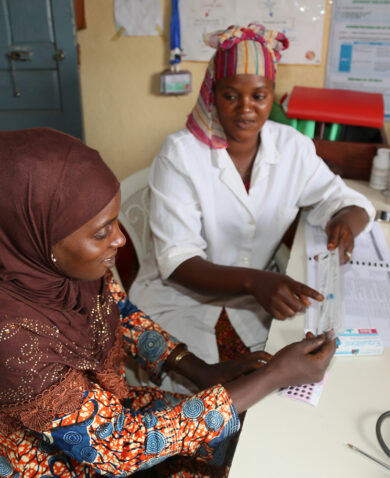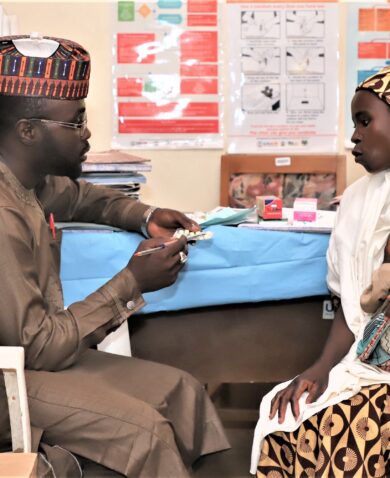
Untapping the Potential of a ‘New’ Human Resource for Health: The Local Community Leader
October 25, 2018 | 2 Minute ReadEntrenched in their communities, local leaders can be powerful extensions of the health workforce. The HRH2030 program demonstrates the potential of a local leadership and management approach for improving health outcomes.
This post originally appeared on the Frontline Health Workers Coalition’s blog.
“There is a family of six children who were facing financial difficulties. I approached the husband and talked to him about family planning. He was hesitant at first, but now [his] wife is on Sayana Press. They recently stopped by my house to thank me for explaining to them the dangers of further pregnancies on [his] wife’s life,” recounts Paul Boyolo, a local leader at Bokito clinic in the Bafia District of Cameroon.
This was just one of the activities Paul set out to accomplish as part of his community family planning (FP) agenda to remove the barriers that impede women, men, girls, and boys from making informed and voluntary decisions about FP and their reproductive health.
Since October 2017, USAID’s HRH2030 (Human Resources for Health in 2030) program has been implementing the Local Leadership and Management approach, which focuses on strengthening the capacity of local community leaders in the Bafia District of Cameroon to bridge the gaps between FP providers and the community and to encourage the development of local solutions to FP challenges. HRH2030 worked with national and regional health representatives to identify the three most critical consequences stemming from a lack of knowledge about FP and limited access to high-quality FP services, including lack of birth spacing, unplanned pregnancies, and sexual precociousness.
These are common issues across the nation. In Cameroon, despite the Ministry of Public Health’s efforts to increase FP service delivery points throughout the country, the use of FP services remains low. The 2011 Demographic and Health Survey documents a contraceptive prevalence rate of 23.4 percent among married women currently using any method of contraception. The rate among married women using a modern method was only 14.4 percent as of that date while the global rate was around 67 percent in 2012 … Read the full post on the Frontline Health Workers website.
Posts on the Chemonics blog represent the views of the authors and do not necessarily represent the views of Chemonics.






